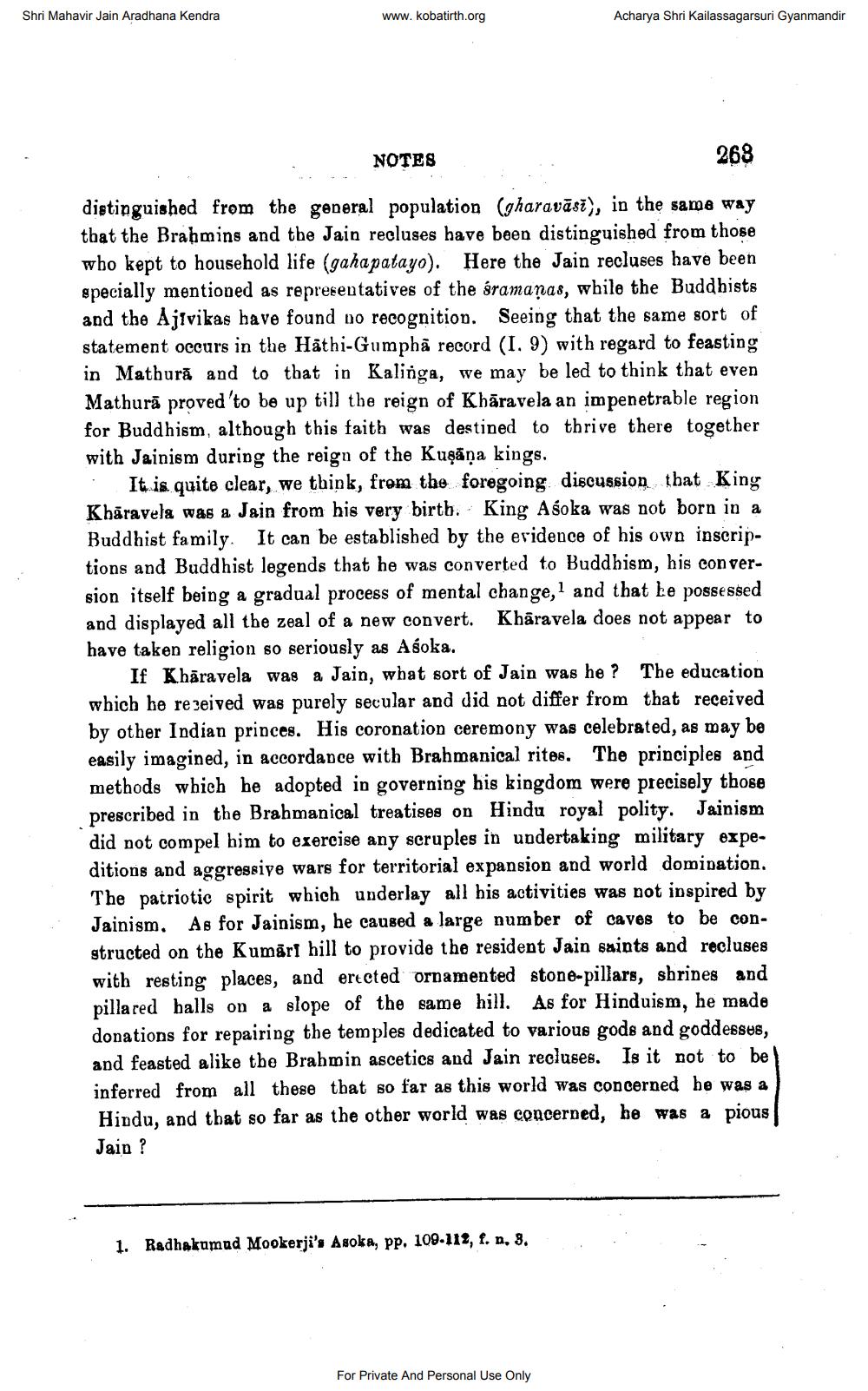________________
Shri Mahavir Jain Aradhana Kendra
www.kobatirth.org
NOTES
268
distinguished from the general population (gharavast), in the same way that the Brahmins and the Jain recluses have been distinguished from those who kept to household life (gahapatayo). Here the Jain recluses have been specially mentioned as representatives of the sramanas, while the Buddhists and the Ajivikas have found no recognition. Seeing that the same sort of statement occurs in the Hathi-Gumpha record (I. 9) with regard to feasting in Mathura and to that in Kalinga, we may be led to think that even Mathura proved 'to be up till the reign of Kharavela an impenetrable region for Buddhism, although this faith was destined to thrive there together with Jainism during the reign of the Kusana kings.
Acharya Shri Kailassagarsuri Gyanmandir
It is quite clear, we think, from the foregoing discussion that King Kharavela was a Jain from his very birth. King Aśoka was not born in a Buddhist family. It can be established by the evidence of his own inscriptions and Buddhist legends that he was converted to Buddhism, his conversion itself being a gradual process of mental change,1 and that he possessed and displayed all the zeal of a new convert. Kharavela does not appear to have taken religion so seriously as Asoka.
If Kharavela was a Jain, what sort of Jain was he? The education which he received was purely secular and did not differ from that received by other Indian princes. His coronation ceremony was celebrated, as may be easily imagined, in accordance with Brahmanical rites. The principles and methods which he adopted in governing his kingdom were precisely those prescribed in the Brahmanical treatises on Hindu royal polity. Jainism did not compel him to exercise any scruples in undertaking military expeditions and aggressive wars for territorial expansion and world domination. The patriotic spirit which underlay all his activities was not inspired by Jainism. As for Jainism, he caused a large number of caves to be constructed on the Kumari hill to provide the resident Jain saints and recluses with resting places, and erected ornamented stone-pillars, shrines and pillared halls on a slope of the same hill. As for Hinduism, he made donations for repairing the temples dedicated to various gods and goddesses, and feasted alike the Brahmin ascetics and Jain recluses. Is it not to be inferred from all these that so far as this world was concerned he was a Hindu, and that so far as the other world was concerned, he was a pious Jain ?
1. Radhakumad Mookerji's Asoka, pp. 109-112, f. n. 3.
For Private And Personal Use Only




